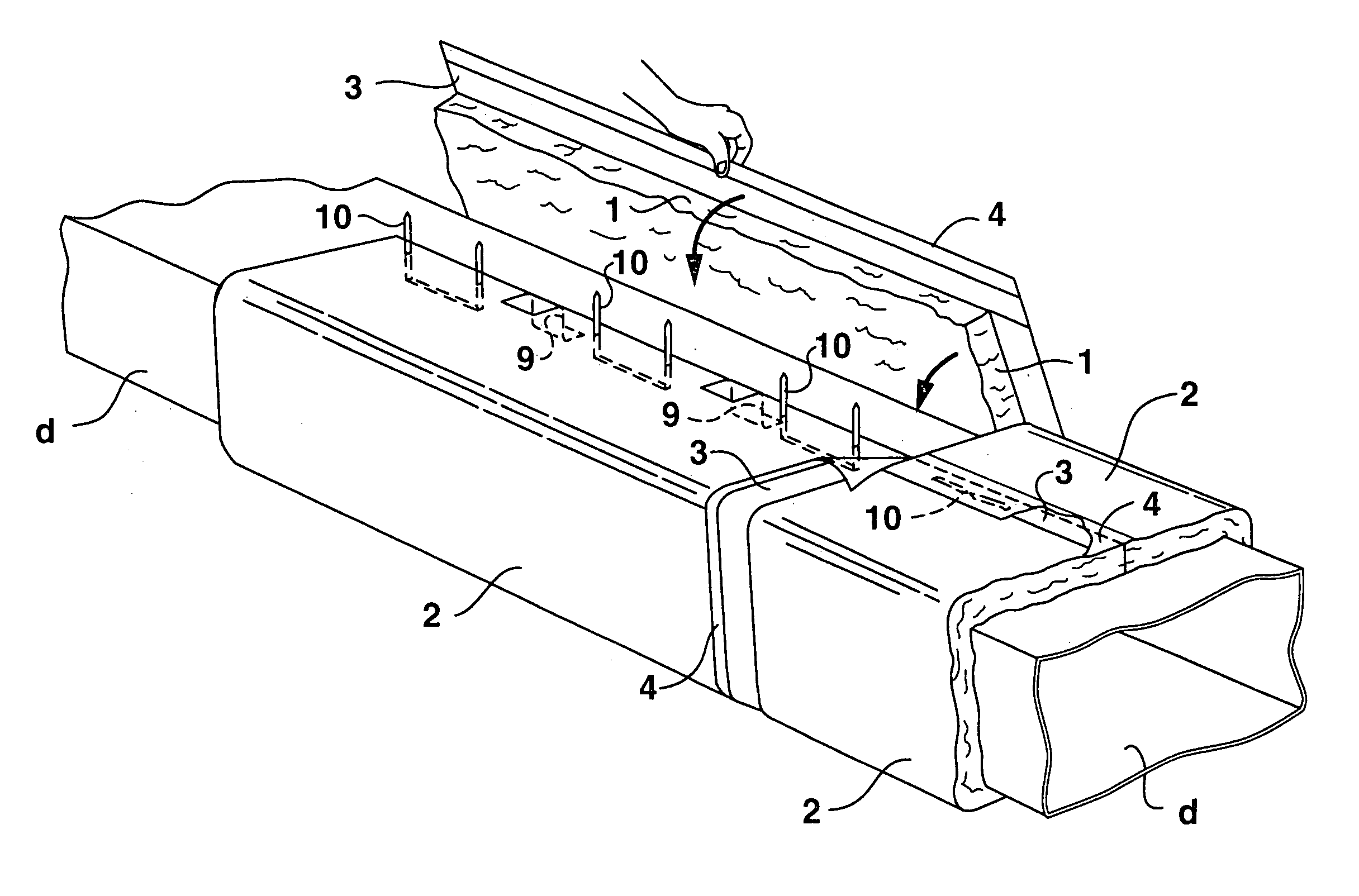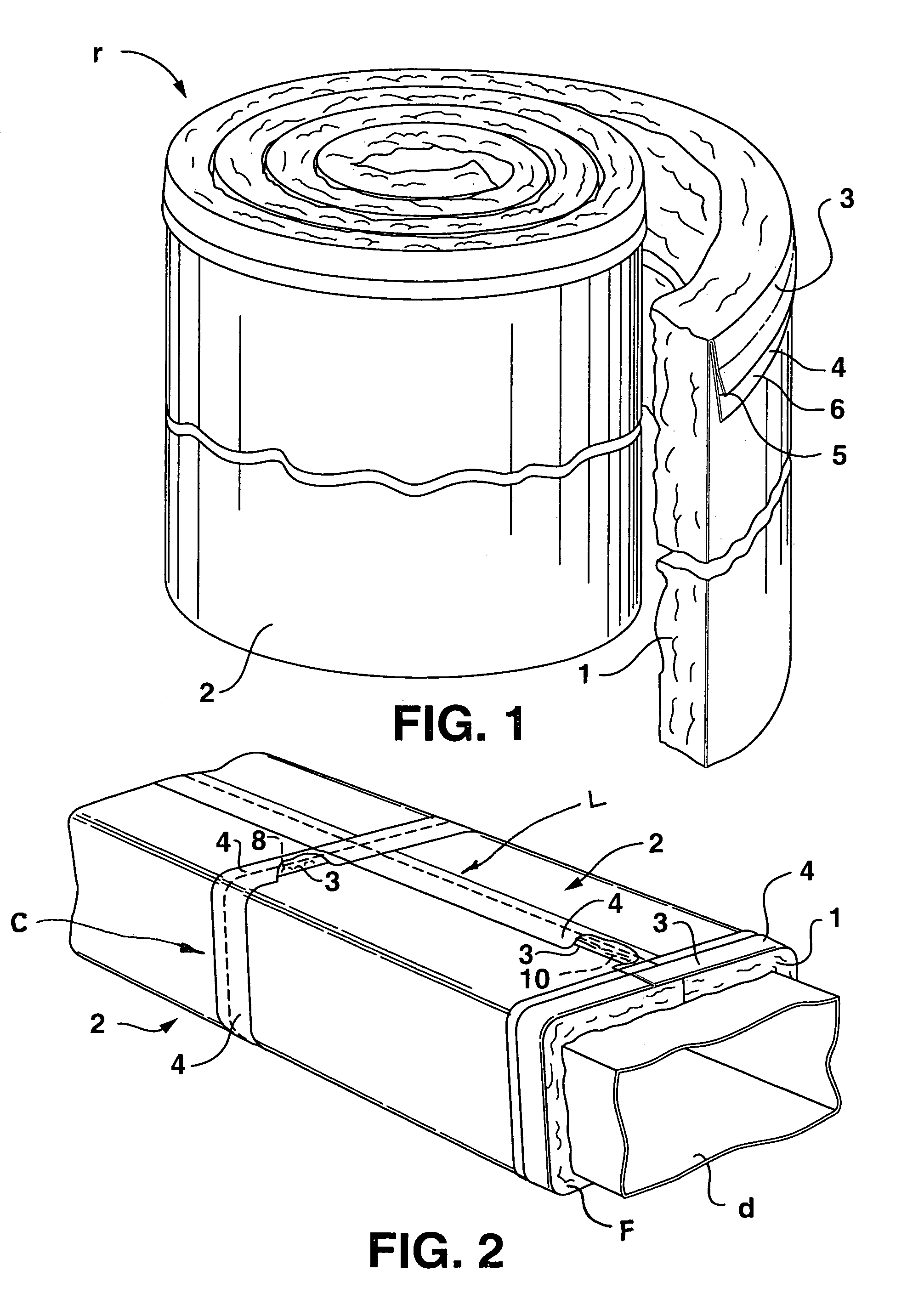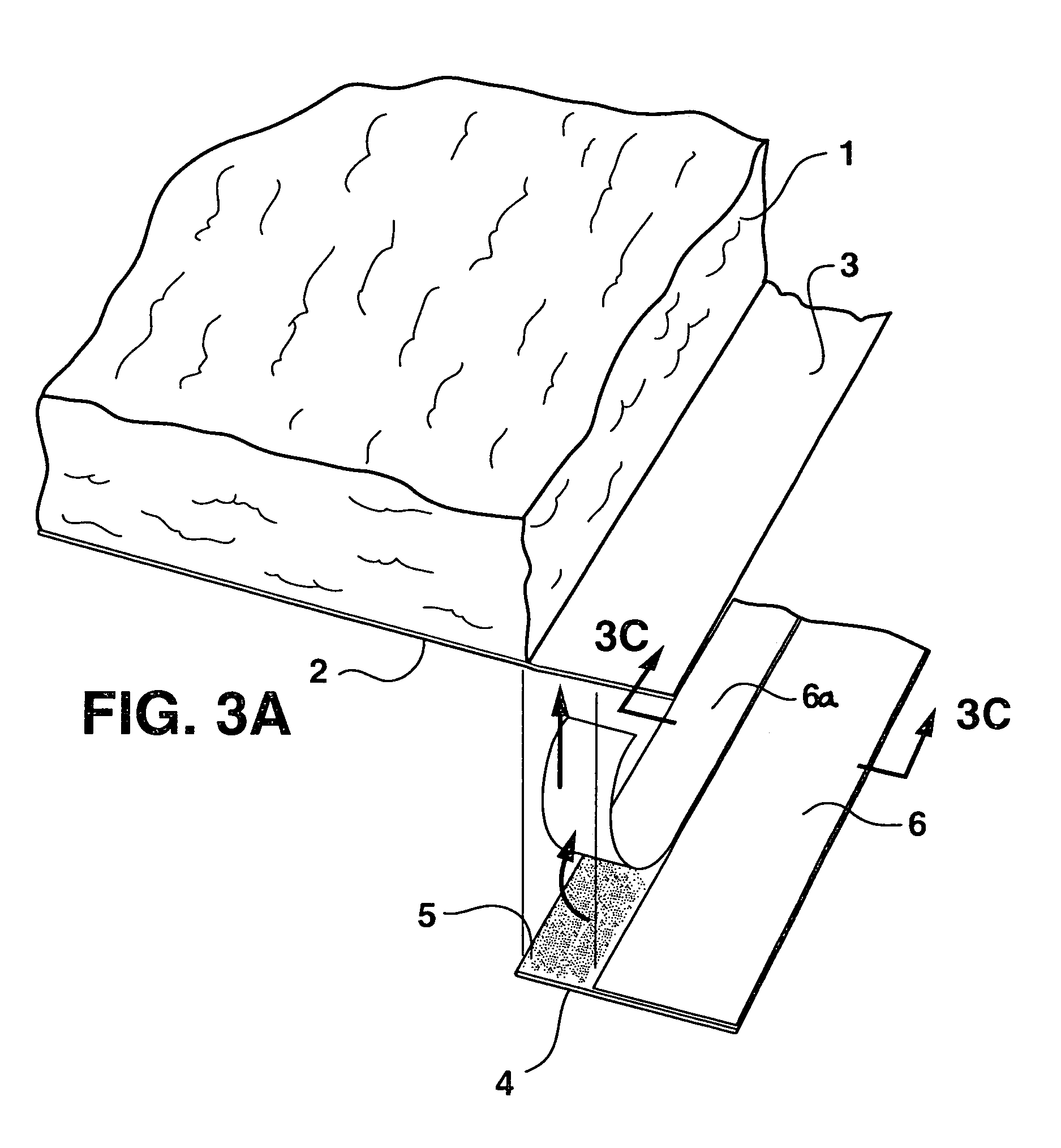Prefabricated insulation for HVAC ductwork and other fluid conduits
a technology of ductwork and fluid conduit, which is applied in the field of thermal insulation, can solve the problems of difficult to completely reach, difficult to cut, and high cost of job site cutting, and achieve the effects of improving insulation installation, reducing costs, and increasing the quality of installation
- Summary
- Abstract
- Description
- Claims
- Application Information
AI Technical Summary
Benefits of technology
Problems solved by technology
Method used
Image
Examples
Embodiment Construction
[0042]The accompanying drawings and the description which follows set forth this invention in its preferred embodiment. However, it is contemplated that persons generally familiar with insulation will be able to apply the novel characteristics of the structures illustrated and described herein in other contexts by modification of certain details. Accordingly, the drawings and description are not to be taken as restrictive on the scope of this invention, but are to be understood as broad and general teachings.
[0043]Referring now to the drawings in detail, wherein like reference characters represent like elements or features throughout the various views, a preferred embodiment of insulation constructed in accordance with the present invention is indicated generally in the figures by reference character 1.
[0044]The entirety of my earlier patent application Ser. No. 10 / 141,453, filed May 8, 2002, is hereby incorporated by referenced thereto.
[0045]As shown in FIG. 1, a preferred embodime...
PUM
 Login to View More
Login to View More Abstract
Description
Claims
Application Information
 Login to View More
Login to View More - R&D
- Intellectual Property
- Life Sciences
- Materials
- Tech Scout
- Unparalleled Data Quality
- Higher Quality Content
- 60% Fewer Hallucinations
Browse by: Latest US Patents, China's latest patents, Technical Efficacy Thesaurus, Application Domain, Technology Topic, Popular Technical Reports.
© 2025 PatSnap. All rights reserved.Legal|Privacy policy|Modern Slavery Act Transparency Statement|Sitemap|About US| Contact US: help@patsnap.com



